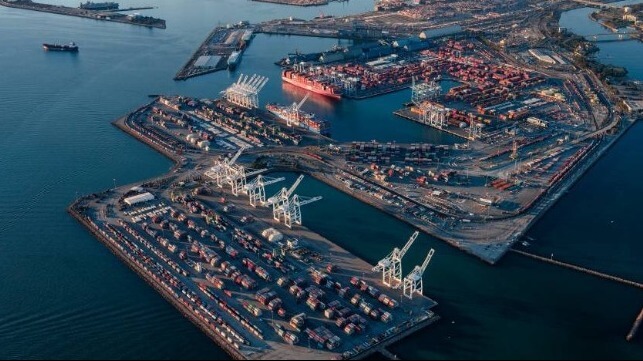Volumes Fall Faster at Port of Long Beach as Imports Slow

The Port of Long Beach experienced an accelerating rate of decline in volumes during October confirming the broader industry views of an end to the surge in volumes experienced over the last two years. October was the second month of volume declines for one of the busiest ports in the United States while also representing the first significant year-over-year drop in volumes.
Port officials pointed to reduced consumer demand which has caused retailers to cut back on their imports. After having brought in large quantities of merchandise earlier in the year, retail inventories are high contributing to the slowdown. Port of Long Beach executives also acknowledged that there has been a shift of imported goods toward the Gulf and East coast ports, which many industry analysts attribute to the prior backlogs in Southern California as well as the fears of potential labor actions as the contract negotiations for Pacific Coast dockworkers have dragged on since their contract expired on July 1.
Illustrating the continuing declines in containership traffic, the Marine Exchange of Southern California, which manages the flow of ships into the San Pedro Bay ports, said yesterday that there were no containerships in the anchorage waiting for berths. In total, they reported that two containerships were transiting the docks and 15 containerships on berth at Long Beach and Los Angeles. Eight other containerships are registered for berths and currently transiting the Pacific.
“The supply chain is returning back to normal and cargo continues to move, so I am optimistic that store shelves will be stocked and goods will be available for delivery during the holiday season,” said Port of Long Beach Executive Director Mario Cordero. “Over the long term, the San Pedro Bay ports complex will continue to be a competitive, strategic and sustainable gateway for trans-Pacific trade.”
During October, the Port of Long Beach moved 658,428 TEU, a 16.6 percent decline from October 2021. In addition to the year-over-year decline, the port experienced a significant slowdown versus September when it handled 741,823 TEU. Imports showed the strongest declines in October falling by nearly a quarter (23.7 percent) versus last year. Exports which had increased in September were also down year-over-year falling two percent. Empties which had been one of the biggest problems for the ports were down 13.4 percent in October.
The Port of Long Beach despite the slowdown in volumes nonetheless ticked past the eight million TEU mark for the calendar year. Overall annual volume is 1.5 percent ahead of 2021.
While reporting the slowdown in volumes, the Port of Long Beach also noted that despite surging inflation and interest rates, economists say consumers still have enough resources to weather economic headwinds. They pointed to experts who feel the softening consumer activity will lead to a better balance between supply and demand, and reduce stress on the national supply chain.
The port is also using the current lull as an opportunity to move forward with its longer-term planning efforts. They also detailed their plans to relocate Pier B as part of the efforts to expand rail capacity and provide for expand rail facilities in the port as part of a 10year project that received federal funds under the initiatives to improve port infrastructure.
